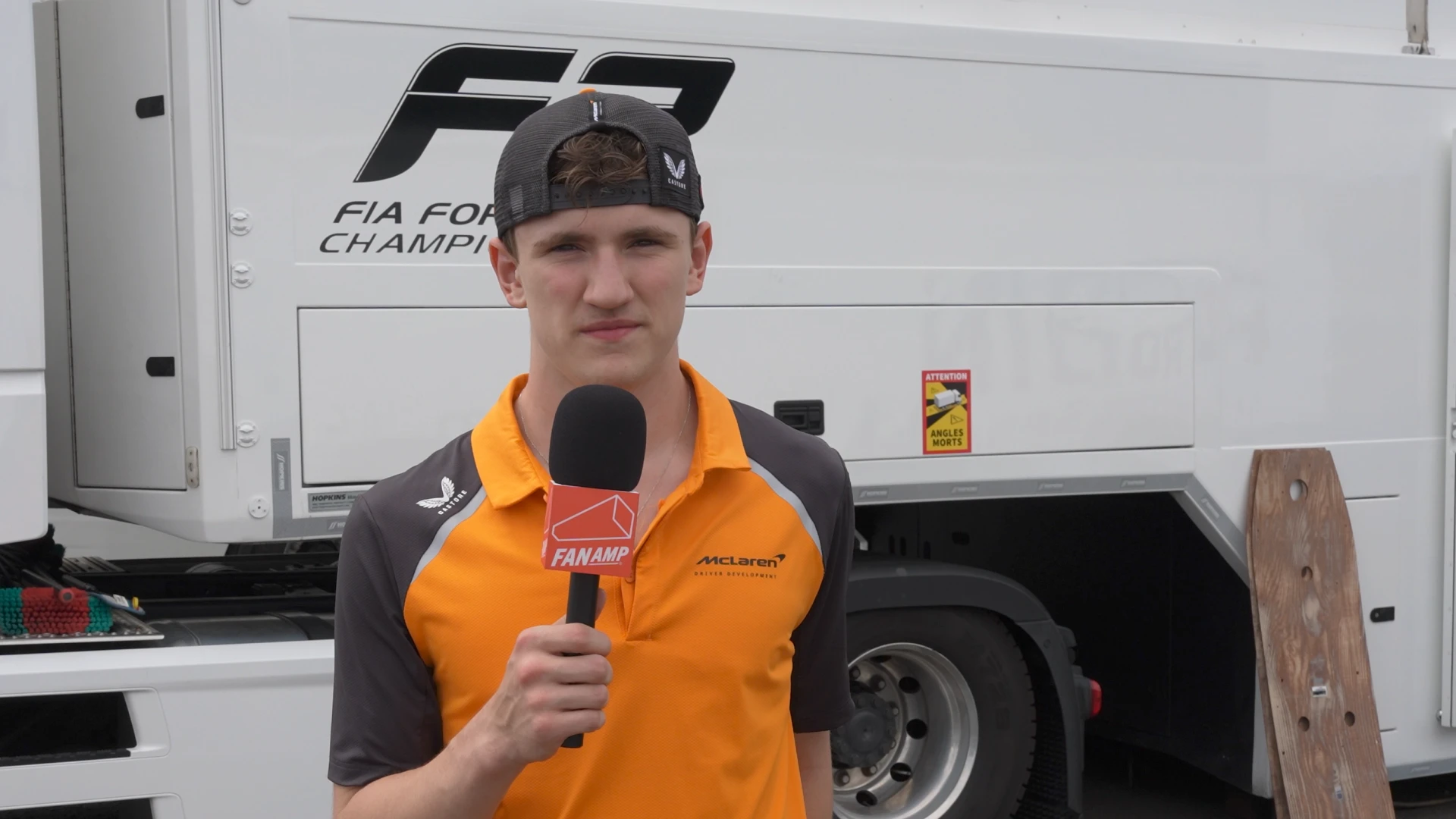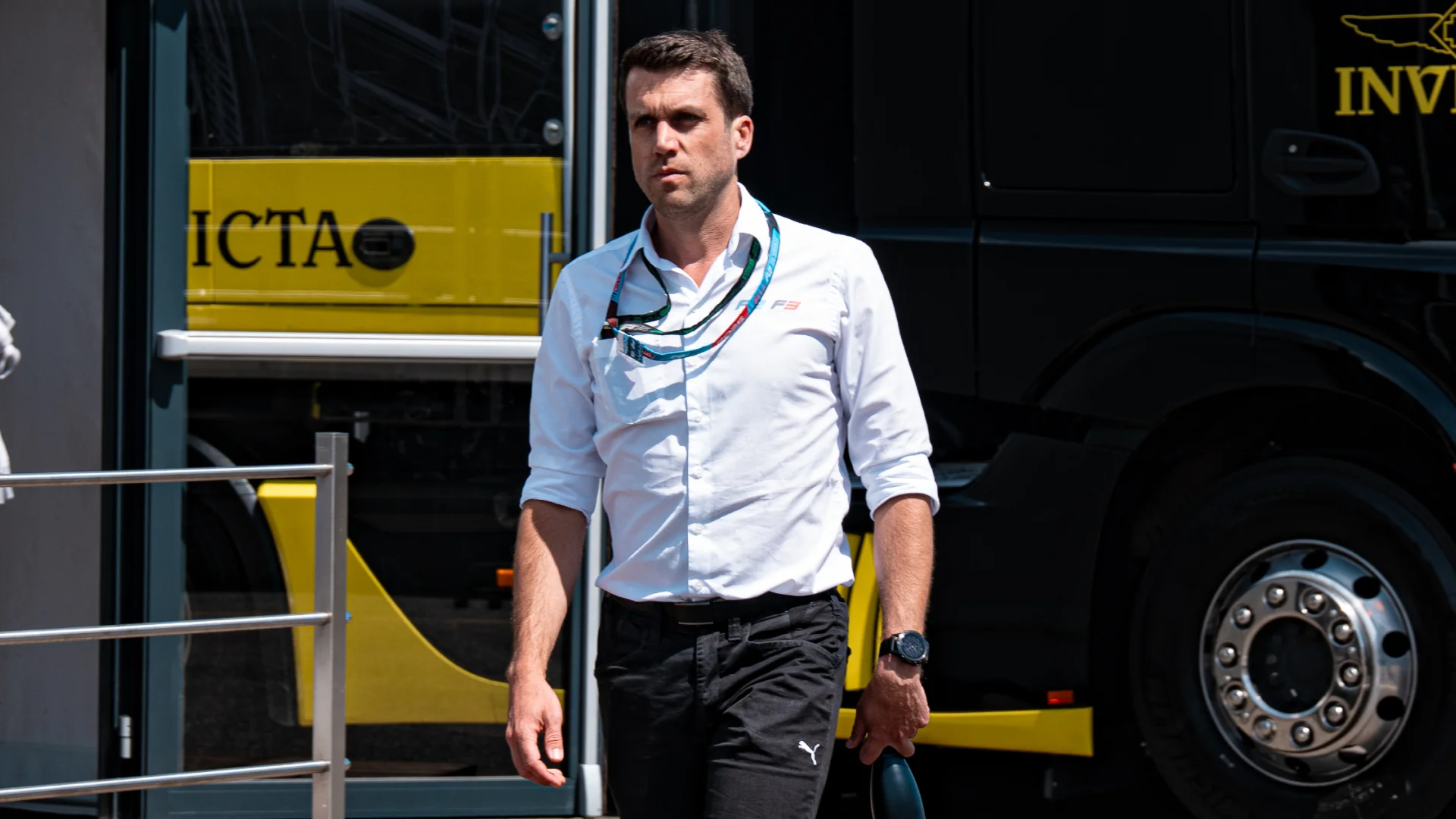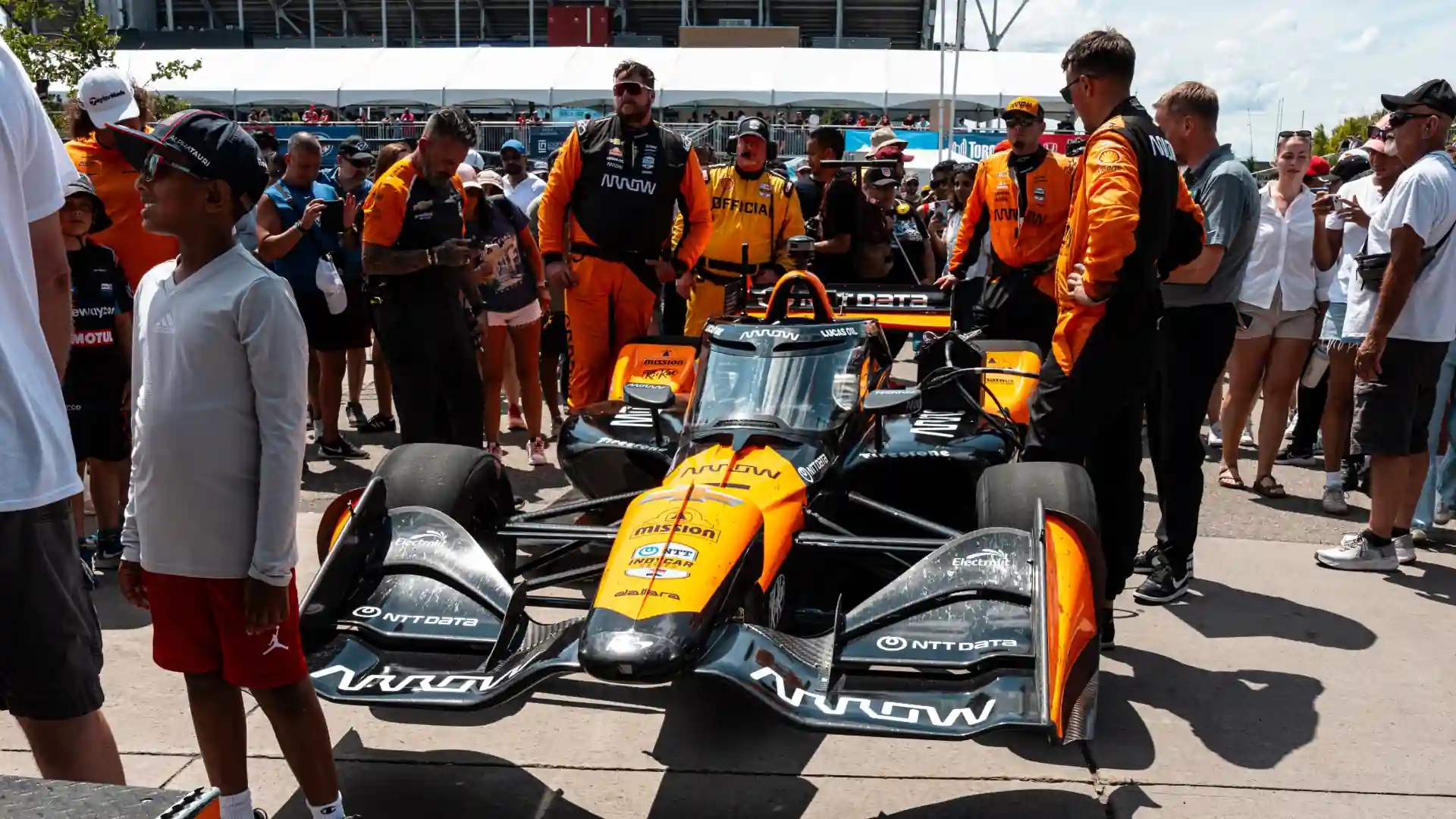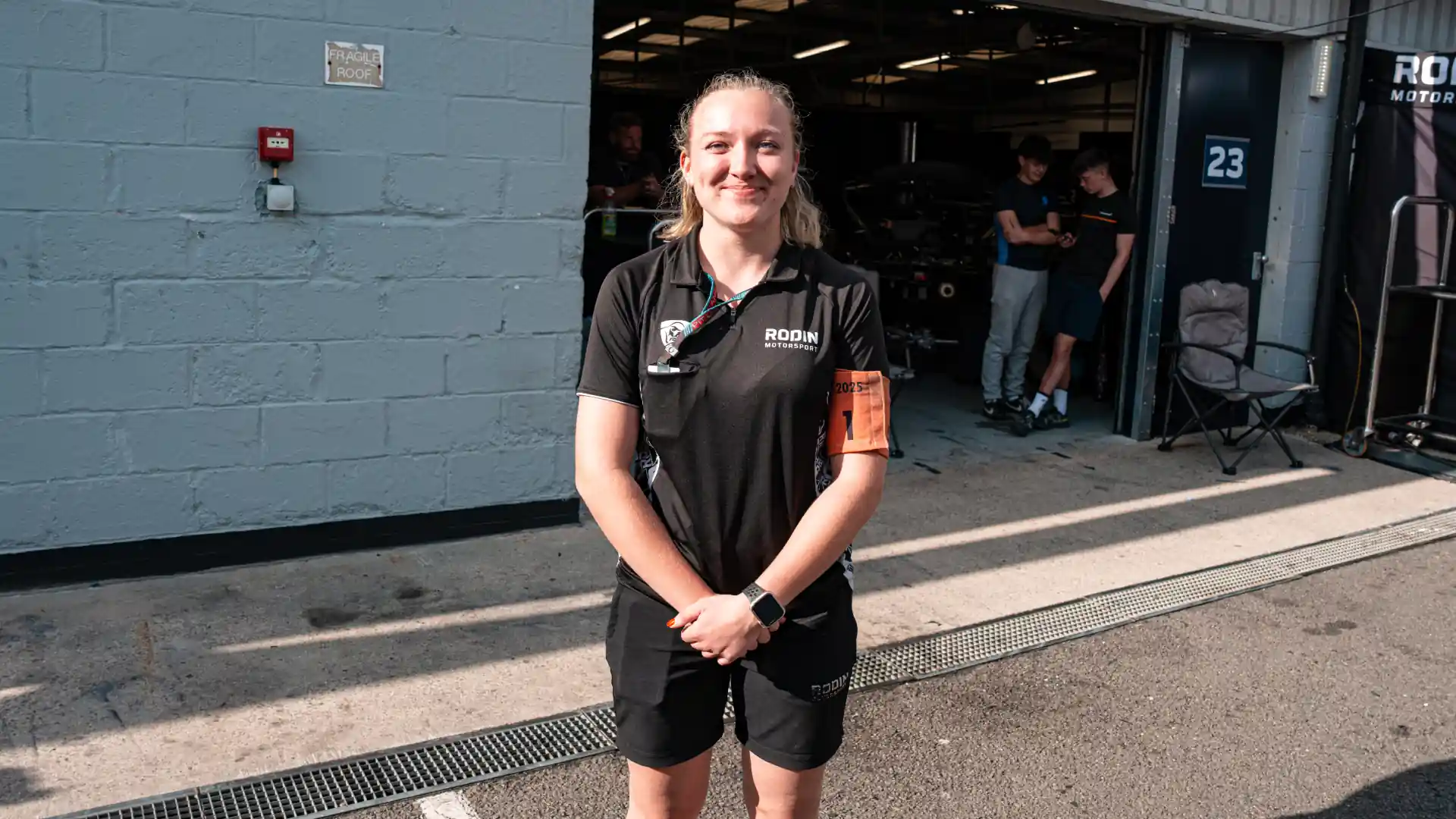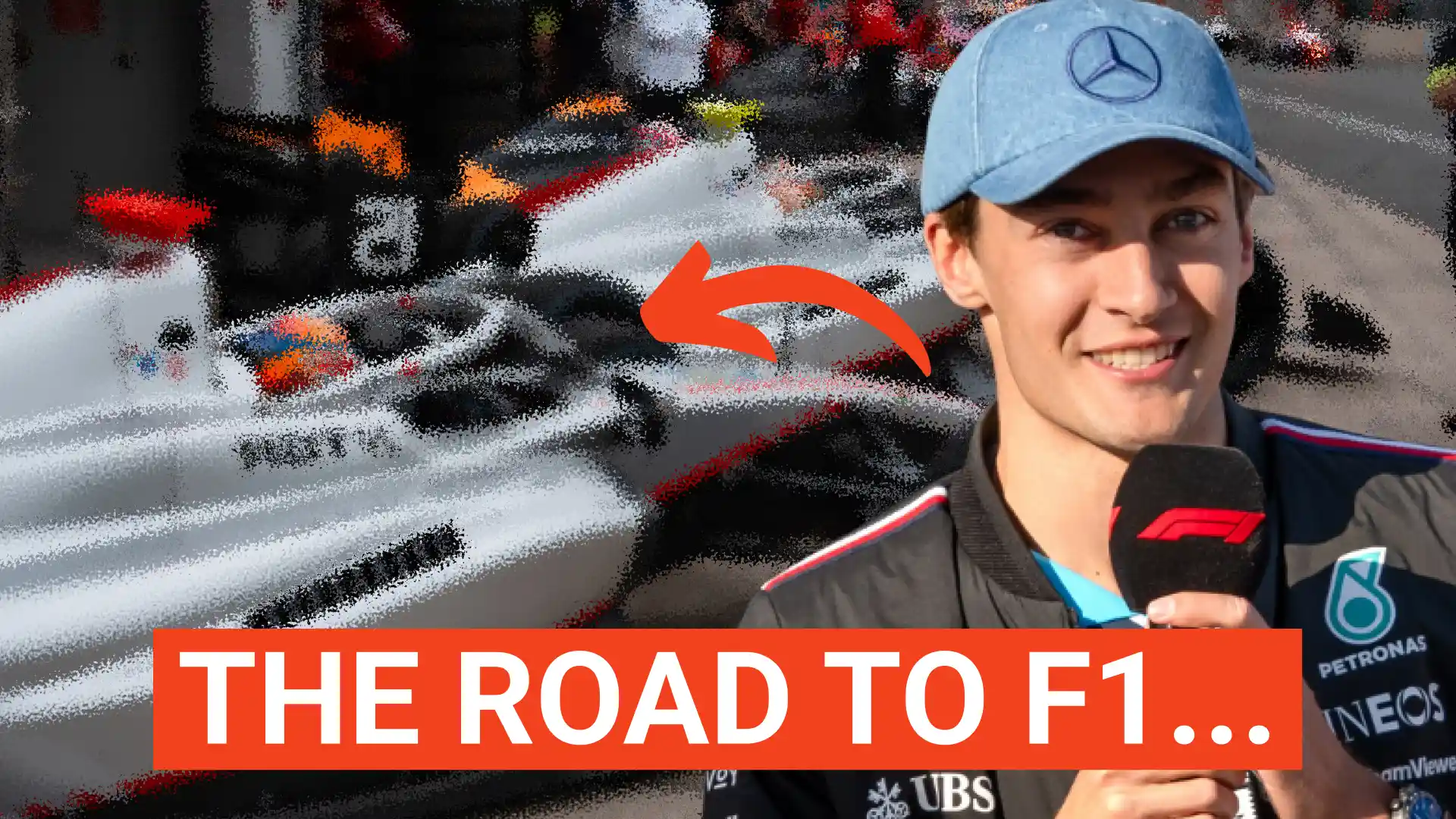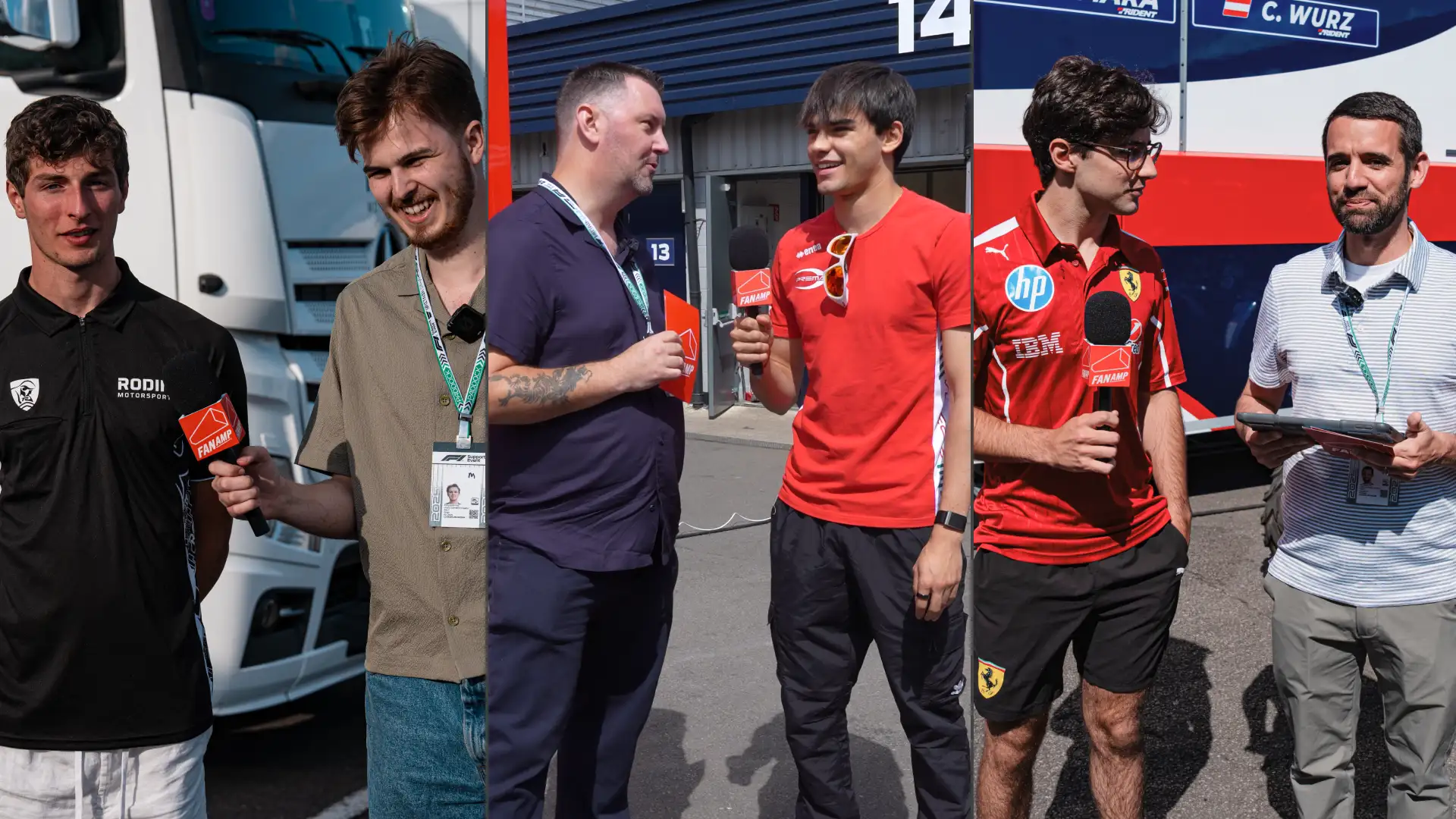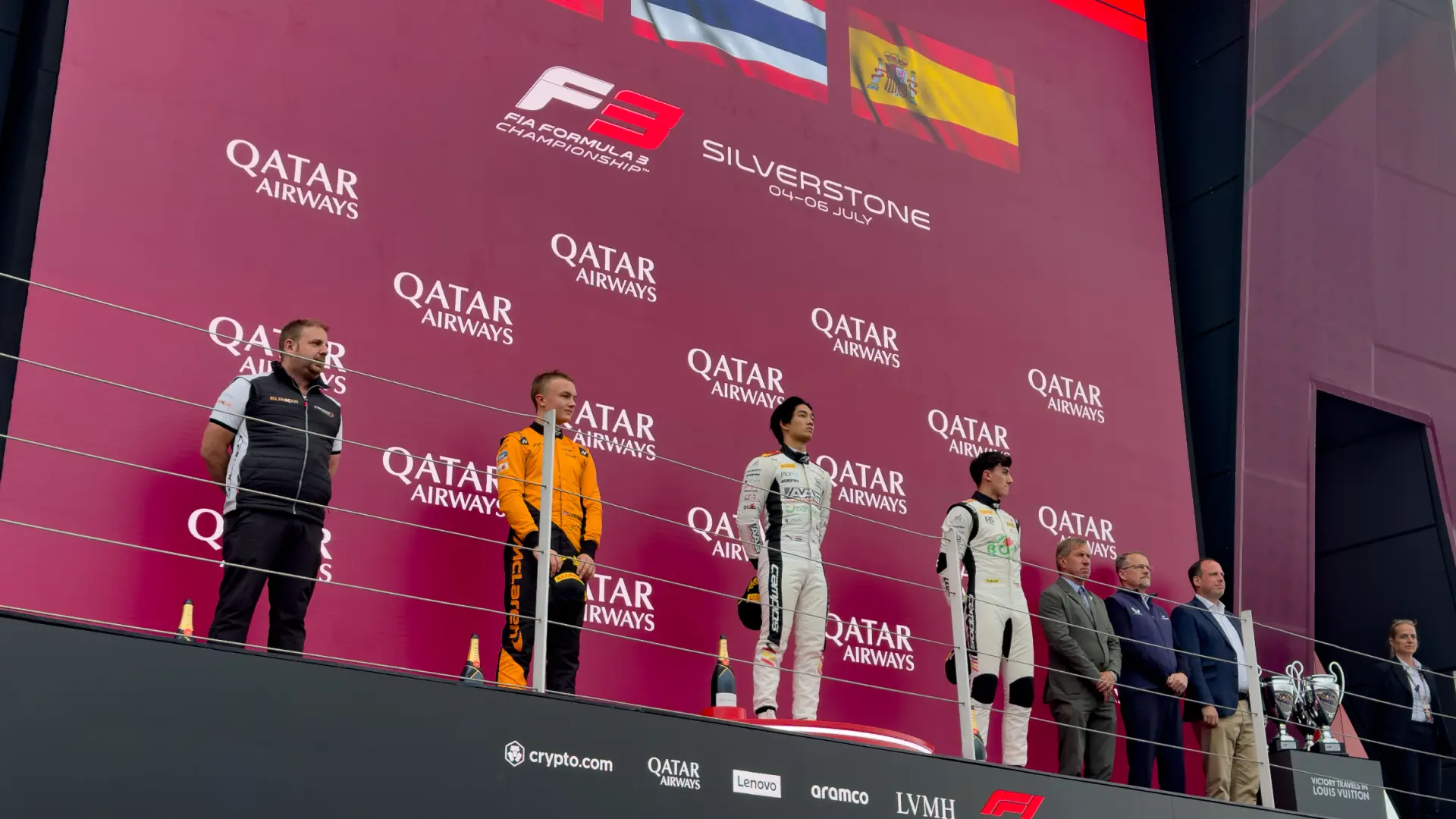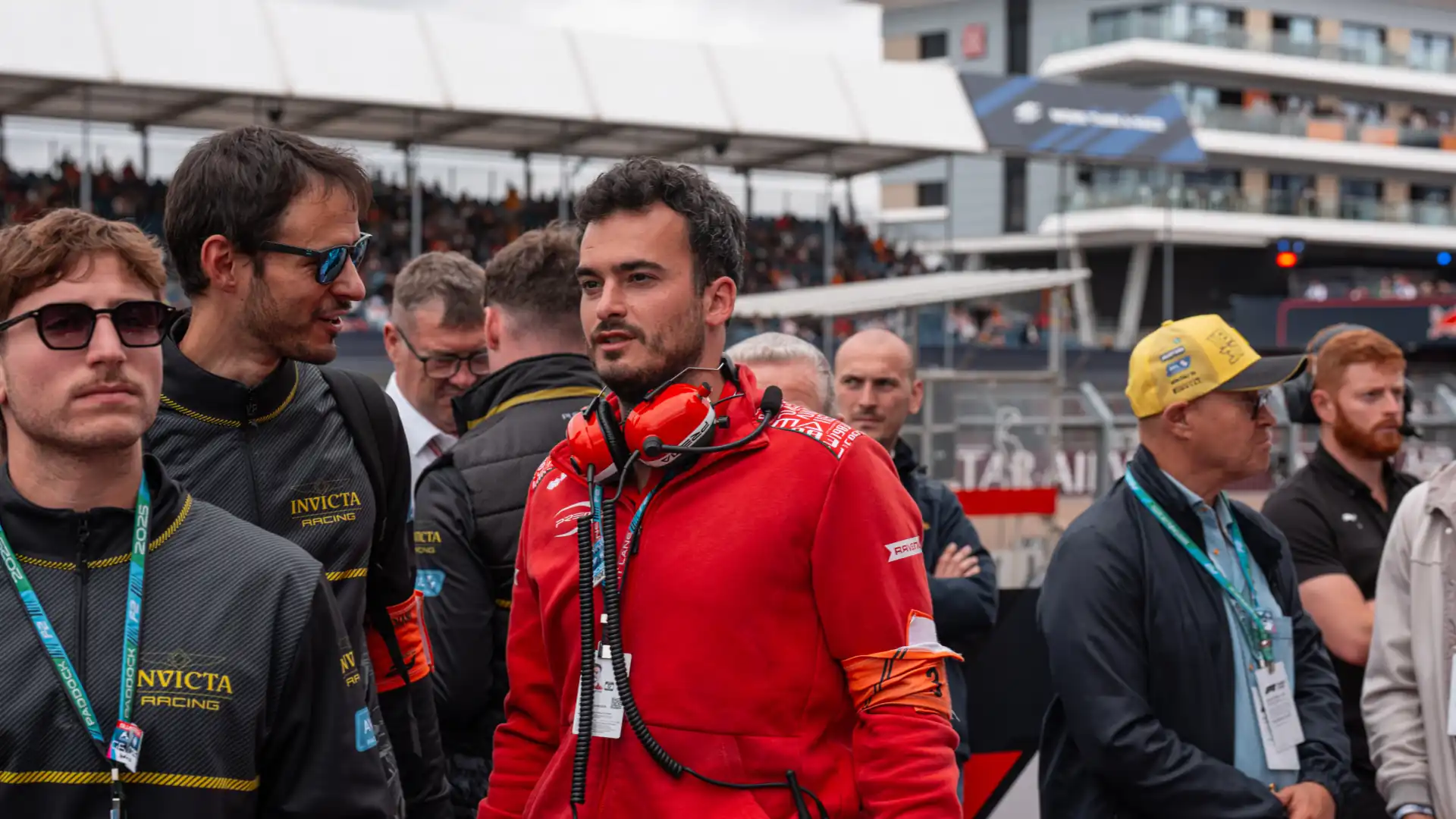A Formula 2 weekend isn’t just a Sunday race! There are cars on track Friday and Saturday, too. Here’s an insider’s guide to help you follow the action whether you're watching from home or at the track.
Friday - Free Practice and Qualifying
Saturday - Sprint Race
Sunday - Feature Race
In 2025, there are 14 Formula 2 races, all of which shadow the Formula 1 schedule, meaning that if you see F2 cars on track you’ll catch F1 running the same day. While there are some flyaway races in Australia and the Middle East, most take place in the European leg of schedule.
Unlike Formula 1 with its ‘traditional’ and ‘sprint’ race weekend formats, Formula 2 follows a consistent schedule throughout the season which spans all three days of a race weekend (Friday to Sunday in most locations).
There are four sessions during a Formula 2 weekend: Free Practice, Qualifying, and two races - the Sprint Race and the Feature Race. Much like Formula 3, the devil is in the details, so let’s break down how each session works.
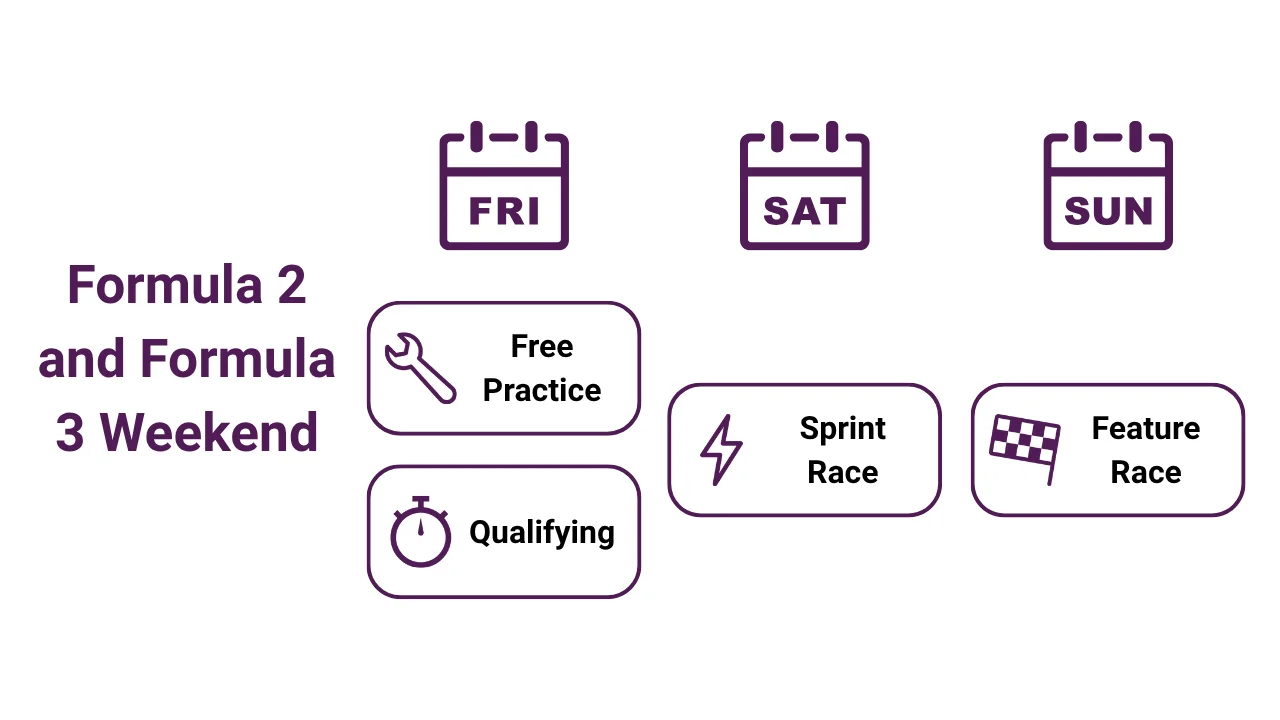
How does F2 Free Practice work?
Just like in Formula 1, F2 teams and drivers need to practice before they race for Championship points. They have to gather as much data as possible in order to tune their single-make cars and minds for what’s to come. That’s what the sole 45-minute Free Practice session is for on Friday.
Following Free Practice, teams will have several hours to regroup before heading out to qualify for starting positions in the upcoming races.
How does F2 Qualifying work?
Formula 2’s weekend schedule quickly diverges from the F1 cadence. That’s because Friday is also when Qualifying happens. Here teams apply their learnings from Free Practice to set the fastest lap time in a 30-minute session.
The way the Qualifying order determines the starting order of the two races in an F2 weekend - the Sprint Race and the Feature Race - is also different.
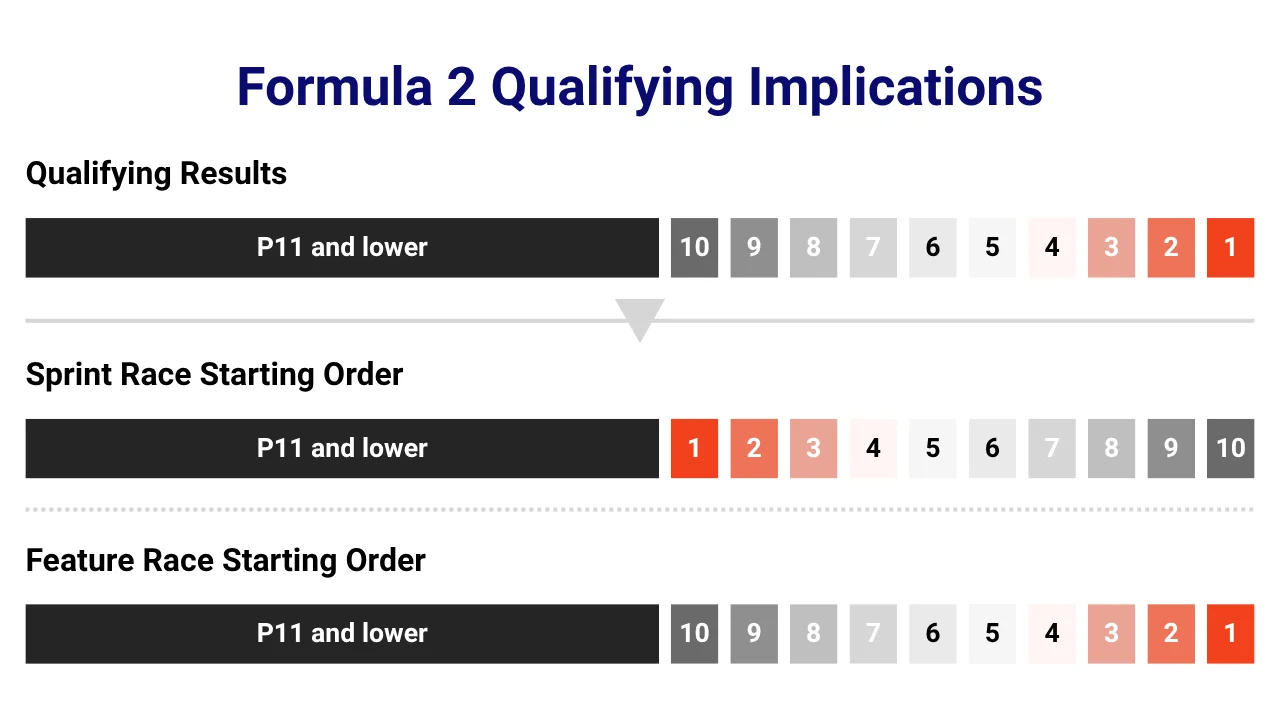
For the Sprint Race, the starting order mirrors the Qualifying order except for the top 10 fastest drivers. These drivers have their starting positions reversed, meaning the 10th fastest will start from P1, and the 1st fastest will start from P10.
For the Feature Race, the starting order mirrors the Qualifying order entirely, from 1st fastest at the front through to the slowest driver at the back. That means the fastest driver will need to fend off the rest of the grid rather than overtaking them.
How does an F2 Sprint Race work?
The F2 Sprint Race is the only Formula 2 session to take place on Saturday. Much like the F1 Sprint, it’s an abbreviated race with drivers earning points based on their finishing position. Drivers compete for approximately 62-78 miles (~100-125 kilometers) or 45 minutes plus 1 lap, whichever comes first. For comparison, an F1 Sprint is 62 miles (100 kilometers).
How does an F2 Feature Race work?
The F2 Feature Race takes place on Sunday, just like the main F1 race. While the F1 cars will go for 190 miles (305 kilometers), the F2 Feature Race covers approximately 87-109 miles (~140-175 kilometers) or 60 minutes plus 1 lap, whichever comes first.
Given the extra distance, teams must complete at least one pit stop and use two tire compounds. This increases the strategic complexity and helps train F2 drivers for what’s to come in Formula 1.
Who scores points in Formula 2?
The top finishers in both the F2 Sprint Race and Feature Race score points, but there are many nuances to consider. Let’s break down who scores points and the important caveats.
F2 Sprint Race points
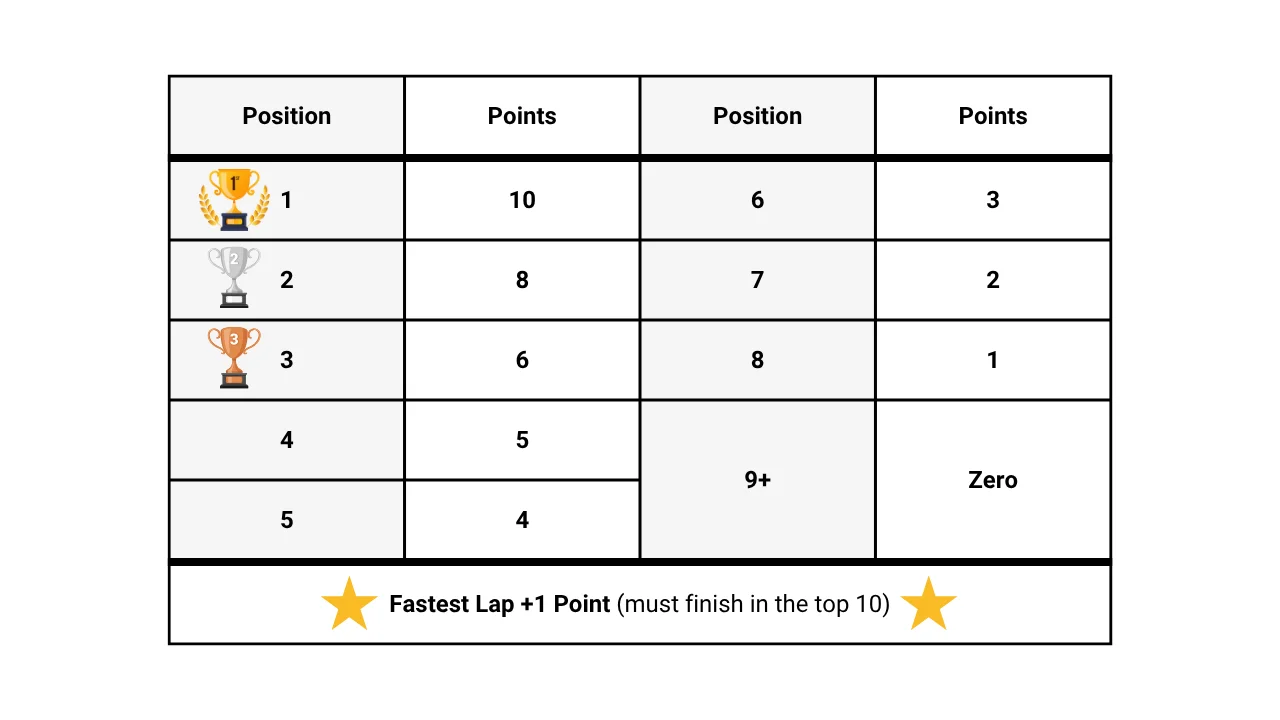
Drivers in the top eight positions all score points. In addition, the driver who sets the fastest lap time is eligible for a bonus point provided they finish within the top 10. If they finish outside the top 10, then the point is awarded to the driver within the top 10 who set the fastest lap.
F2 Feature Race points
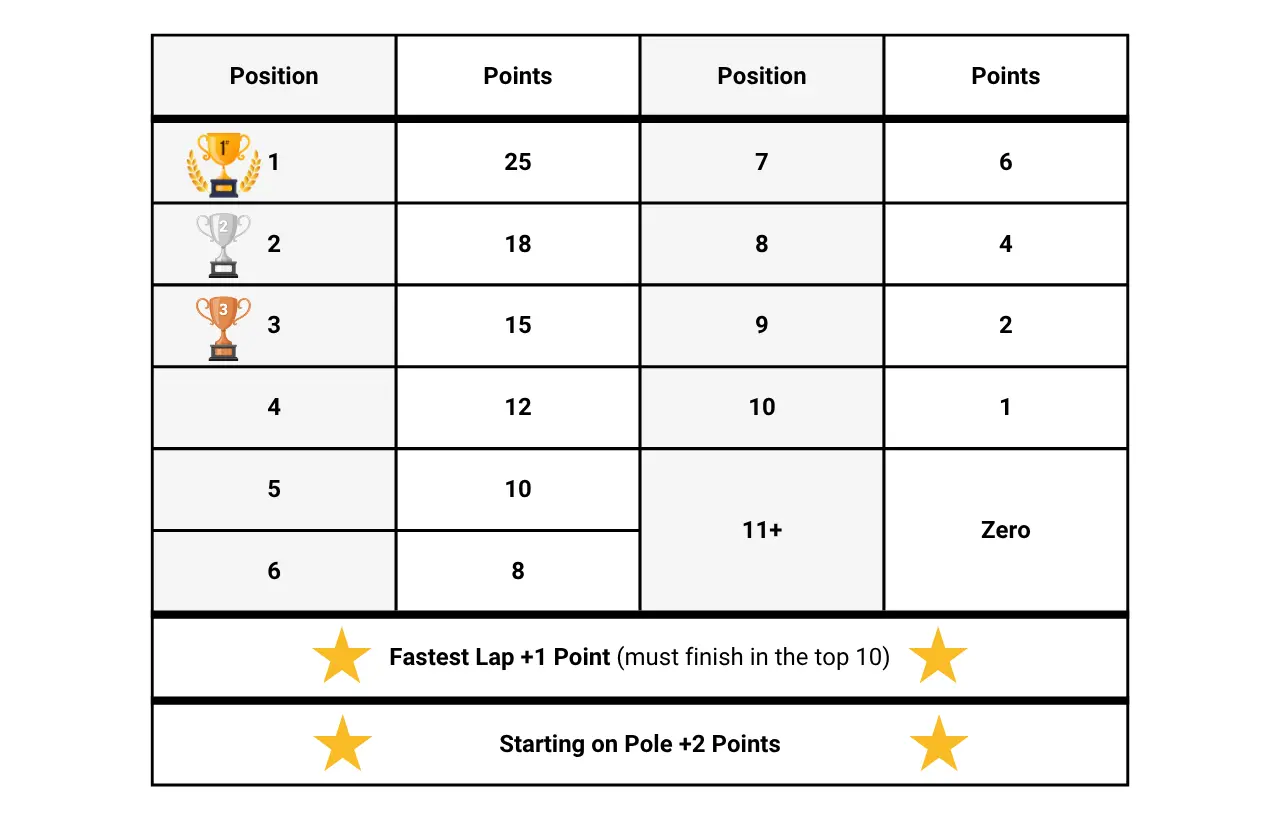
Like F1, the top 10 finishers in the F2 Feature Race score points. And same as in the F2 Sprint Race, a fastest lap point is also awarded to the driver in the top 10 who set the fastest lap time.
Finally, the driver who starts the Feature Race in pole position (as determined by the final starting grid) is allocated two points. This is true even if they are promoted into the position, for example due to a grid penalty applied to the driver who set the fastest lap in Qualifying.
If you’re ready to watch Formula 2 or learn more about the sport in general, check out the full F1 schedule and our other guides!


